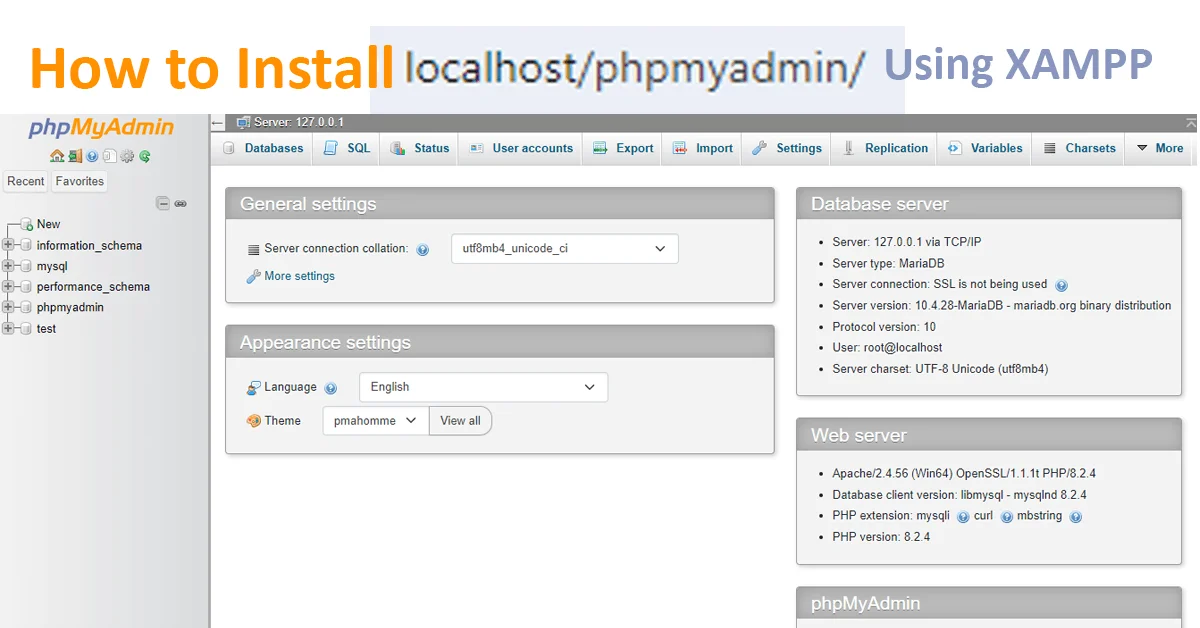Search Engine Optimization is very commonly known as SEO. It is important for businesses and websites looking to increase their online visibility. In today’s digital world, competition is fierce, and standing out requires more than just having a website. SEO strategies help websites rank higher in search engine results pages (SERPs), making it easier for potential customers to find them and increasing organic traffic. Understanding how SEO techniques work is essential for anyone looking to grow their online presence. This blog will guide you through SEO best practices and how it works.
What is Search Engine Optimization?
Search Engine Optimization (SEO) is optimizing a website or online content to improve its visibility and ranking on search engine results pages (SERPs) like Google, Bing, and Yahoo.
The higher a website ranks on SERPs, the more likely it is to receive organic (unpaid) traffic from users searching for relevant information.
SEO is essential strategy for overall Digital Marketing. It help businesses and individuals who want to build an online presence, reach their target audience, and generate leads or sales.
How Does Search Engine Optimization Work:
To understand how Search Engine Optimization works, it’s important to know that search engines use complex algorithms to determine which pages should rank higher. These algorithms evaluate several factors to assess the relevance and quality of a webpage about a user’s search query. Let’s break down how SEO works in critical steps:
Crawling and Indexing
Search engines use bots, known as crawlers or spiders, to discover new web pages and update existing ones. They crawl websites, following internal links, to gather information about the page’s content. Once a page is crawled, it’s added to the search engine’s index.
A page cannot appear in search results without being indexed, which is why technical SEO elements like XML sitemaps are essential.
Search Engine Optimization Algorithm Analysis:
Once a web page is indexed, search engines use a complex SEO algorithm to determine how relevant and valuable the page is for a specific search query. This algorithm looks at factors like keyword usage, the freshness of content, the website’s mobile-friendliness, and the quality of backlinks (external links pointing to the site).
It’s important to note that search engines constantly update and refine these algorithms to provide users with the best results, meaning Search Engine optimization strategies also need to adapt to these changes.
Types of SEO (Search Engine Optimization)
Three main types of SEO work together to improve your website’s ranking:
- On-Page SEO: This involves optimizing your website’s content and HTML code. It includes using the right keywords, writing great content and ensuring your site is mobile-friendly.
- Off-Page SEO focuses on activities outside your website that impact your ranking. The most important aspect of off-page SEO is building backlinks—getting other websites to link back to your site.
- Technical SEO: This involves improving your website’s backend, such as making sure it loads quickly, is easy for search engines to crawl, and has a secure HTTPS connection.
Why is Search Engine Optimization Important:
SEO is vital for several reasons:
- Visibility: If your website doesn’t appear on the first page of search results, very few people will find it.
- Traffic: Higher rankings lead to more clicks and visitors to your site.
- Credibility: People tend to trust websites that appear higher in search results.
- Cost-Effective: Unlike paid advertising, SEO generates organic (free) traffic.
How to Get Started with SEO
Starting with Search Engine Optimization can seem overwhelming, but you can make significant improvements by focusing on a few key areas. Here’s a step-by-step guide:
Keyword Research for Better SEO Reach:
Keywords are the words and phrases people use to search for something online. To rank well in search results, you need to know what keywords your audience is using.
How to Do Keyword Research:
- Use free tools like Google Keyword Planner, Ubersuggest, or AnswerThePublic to find keywords related to your industry.
- Focus on short-tail keywords (one or two words) and long-tail keywords (three or more words), which tend to have less competition and better conversion rates.
- Identify keywords with a good balance of search volume and low competition.
On-Page SEO
Once you’ve identified your target keywords, the next step is to optimize your website’s pages. On-page SEO helps search engines understand your page and whether it’s relevant to a user’s search.
Key On-Page SEO Techniques:
- Title Tags: The title tag is the clickable headline that appears in search results. It should be compelling and include your primary keyword.
- Meta Descriptions: This is a short description of your page that appears under the title tag. Although it doesn’t directly affect rankings, a well-written meta description can encourage users to click on your link.
- Headings (H1, H2, H3): Use headings to organize your content. The H1 tag should include your primary keyword and describe the page’s main topic.
- Keyword Placement: Sprinkle your target keyword naturally throughout the content, including in the title, headers, and body. Don’t overdo it, this is called keyword stuffing and can hurt your rankings.
- Content: Write high-quality content that provides value to the reader. The content should be original, informative, and engaging.
- Internal Links: Link to other pages on your website to help users and search engines navigate your site more easily.
The overall process of On-page SEO with SEO Friendly Content is called Content Marketing.
Off-Page SEO
Off-page SEO is all about building your website’s authority. The more reputable websites that link to your content, the more search engines will see your site as trustworthy.
Effective Off-Page SEO Techniques:
- Backlinks: Earn backlinks from high-authority sites by creating valuable content, guest posting, and building relationships with other site owners.
- Social Media: While links don’t directly impact rankings, promoting your content on platforms like Facebook, Twitter, and LinkedIn can increase visibility and traffic.
- Online Reviews: Positive reviews on platforms like Google My Business and Yelp can improve your local SEO and help build your online reputation.
Technical Search Engine Optimization
Technical SEO ensures your website is easy for search engines to crawl and index.
Key Technical SEO Elements:
- Mobile-Friendliness: Google uses mobile-first indexing, meaning it prioritizes mobile versions of websites. Make sure your site is responsive and works well on all devices.
- Site Speed: A fast-loading website improves user experience and boosts your rankings. Use tools like Google PageSpeed Insights to identify and fix issues slowing down your site.
- SSL Certificate: An SSL certificate ensures your website is secure. Google gives preference to websites with HTTPS encryption.
- XML Sitemap: A sitemap helps search engines understand the structure of your site and find all your pages. Create an XML sitemap and submit it to Google Search Console.
Create Quality Content
Content is the heart of Search Engine Optimization. Your SEO efforts will be in vain if you’re not providing valuable, helpful information. Here are some tips for creating SEO Friendly content that ranks:
- Answer User Intent: People search for specific reasons, whether to find information, purchase or solve a problem. Make sure your content addresses what the user is looking for.
- Use Multimedia: Images, videos, and infographics make your content more engaging and can improve time on page, a factor search engines consider in rankings.
- Update Regularly: Fresh content signals to search engines that your site is active and relevant.
Monitor and Adjust Your SEO Strategy
Search Engine Optimization is not a one-time task, it requires ongoing effort. After implementing your strategy, use tools like Google Analytics, Search Console, and other tools to monitor your website’s performance.
Key metrics to track:
- Organic Traffic: How much traffic is coming from search engines?
- Bounce Rate: The percentage of visitors who leave your site after viewing only one page. A high bounce rate could indicate poor user experience or irrelevant content.
- Keyword Rankings: Track where your site ranks for your target keywords. If rankings drop, it could be due to new competitors or algorithm changes.
The Role of SEO Algorithms:
Search engines use SEO algorithms to determine how relevant and authoritative a website is for a particular query. While search engines don’t reveal exactly how their algorithms work, they use hundreds of ranking factors. Some of the most important factors include:
- Relevance: Does the page answer the user’s query? Search engines look for keywords and analyze how well the content matches user intent.
- Authority: A site with more high-quality backlinks is seen as more authoritative.
- User Experience: Metrics like site speed, mobile-friendliness, and engagement rates all influence rankings.
Standard SEO Mistakes to Avoid:
While learning SEO, it’s essential to avoid common mistakes that can hurt your rankings:
- Keyword Stuffing: Overloading your content with keywords unnaturally can result in penalties from search engines.
- Duplicate Content: Publishing the same content on multiple pages confuses search engines and hurts your rankings.
- Ignoring Mobile Optimization: With most searches happening on mobile devices, a non-mobile-friendly website can suffer significantly in rankings.
- Low-Quality Backlinks: Backlinks from spammy or irrelevant sites can damage your site’s authority.
Search Engine Optimization as of Now: What to Expect:
As we move into 2024, SEO continues to evolve. Here are a few trends to watch out for:
- AI and SEO: Artificial intelligence, especially Google’s RankBrain, is becoming more critical in determining website rank. It’s crucial to focus on user experience and creating content that meets the needs of your audience.
- Voice Search Optimization: With the rise of voice search, optimizing for conversational keywords and questions will be critical in 2024.
- Featured Snippets: More users find answers directly in search results without clicking on a website. Aim to structure your content in a way that answers common questions and can appear as a featured snippet.
- Core Web Vitals: These metrics, which measure page speed, responsiveness, and visual stability, will continue to be an important ranking factor.
Final Thoughts on Search Engine Optimization
SEO is an ongoing process that requires attention to detail and patience. While it may take time to see results, investing in Search Engine Optimization is crucial for long-term success. Whether you’re just starting or looking to refine your existing strategy, focusing on user experience, producing high-quality content, and staying updated with algorithm changes will help your site rank higher and attract more traffic.
Following the steps outlined in this guide can improve your website’s visibility, drive more organic traffic, and ultimately grow your online presence.









